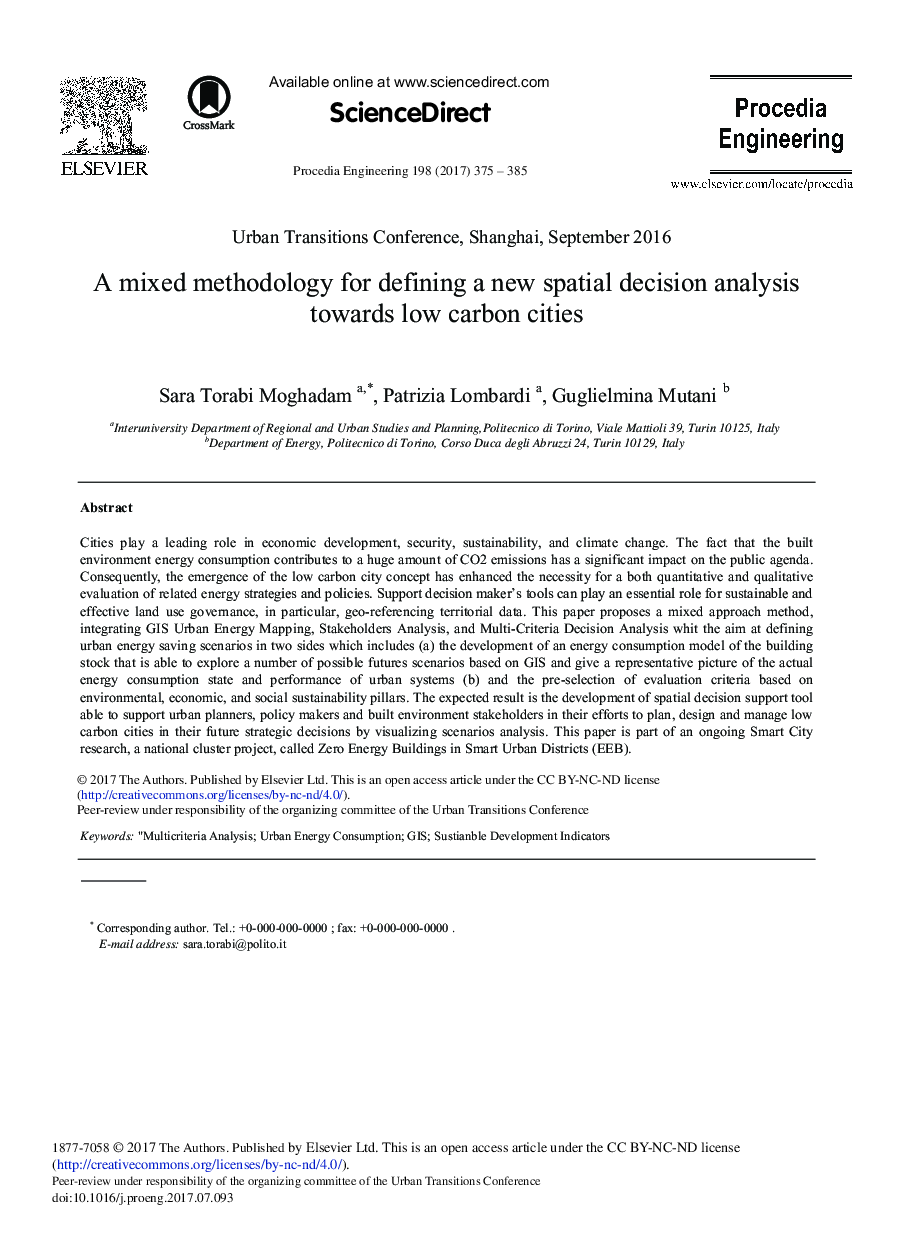| Article ID | Journal | Published Year | Pages | File Type |
|---|---|---|---|---|
| 5027403 | Procedia Engineering | 2017 | 11 Pages |
Cities play a leading role in economic development, security, sustainability, and climate change. The fact that the built environment energy consumption contributes to a huge amount of CO2 emissions has a significant impact on the public agenda. Consequently, the emergence of the low carbon city concept has enhanced the necessity for a both quantitative and qualitative evaluation of related energy strategies and policies. Support decision maker's tools can play an essential role for sustainable and effective land use governance, in particular, geo-referencing territorial data. This paper proposes a mixed approach method, integrating GIS Urban Energy Mapping, Stakeholders Analysis, and Multi-Criteria Decision Analysis whit the aim at defining urban energy saving scenarios in two sides which includes (a) the development of an energy consumption model of the building stock that is able to explore a number of possible futures scenarios based on GIS and give a representative picture of the actual energy consumption state and performance of urban systems (b) and the pre-selection of evaluation criteria based on environmental, economic, and social sustainability pillars. The expected result is the development of spatial decision support tool able to support urban planners, policy makers and built environment stakeholders in their efforts to plan, design and manage low carbon cities in their future strategic decisions by visualizing scenarios analysis. This paper is part of an ongoing Smart City research, a national cluster project, called Zero Energy Buildings in Smart Urban Districts (EEB).
